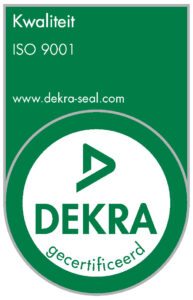In partnership with Rohde & Schwarz, we have contributed to their RF Lumination seminar series, by organizing a full day about non-linear PA behaviour measurement and modelling. Below you can download the presentations.
Transistors used for modern wireless applications are commonly used within advanced Amplifier designs. Highest efficiency is achieved in the non-linear region of these complex amplifier designs, but come along with higher harmonics which again decrease gain and thus power added efficiency (PAE). Harmonic load pull measurement optimizes not only on the target frequency f0 but also at higher harmonics 2f0 and 3f0. Since non-linear behavior will be included within the extracted models, they help to optimize amplifier designs with more complete models in simulation stages of the design process. The same modeling approach could be used at the PA level. The amplifier’s enhanced poly-harmonic distortion (EPHD) model could be used to simulate the response of the circuit when this one is loaded by an isolator followed by a band-pass filter for instance. Indeed, in such configuration, the influence of the harmonic terminations may impact the circuit performances. Such a model will then help the PA user to choose the best on-the-shelf elements represented by their equivalent S parameters files in a virtual system design flow.
The combination of the performance Rohde & Schwarz 4-port VNA R&S ZNA, Maury Microwave automated tuner with IVCAD automated measurement and modelling software powered by AMCAD Engineering is a turn-key solution for doing fast (Hybrid-) active harmonic load-pull measurements. The ZNA has four internal sources which means no additional external sources are required to control amplitude and phase for the harmonic frequencies 2f0 and 3f0. With Maury’s IVCAD software we demonstrate how to control the setup and perform harmonic load pull measurements. These results will be exported into equivalent models and used in Cadence Microwave Office simulation software for an accurate simulation on an amplifier design.
Agenda
-
- With new wideband wireless communication standards like 5G, development of enhanced classes of power amplifiers also require enhanced measurement techniques like harmonic vector receiver load pull. During the presentation different configurations, each with his own advantages and disadvantages will be discussed. The attendee learns to understand how load pull be used in his/hers own applications.
- Special calibration incl. phase calibration using the comb generator will be covered in session as well.
-
-
- A presentation discussing the purpose and functionality of different types of models, e.g. Compact-, EPHD-, Behaviour models. Which type of measurements are required for generating a model and how can this be exported into simulation software.
-
Understand linearity improvement possibilities on a physical amplifier
Amplifier Characterization by doing harmonic load pull and large signal measurements
-
- RF Power Amplifiers are typically used where they are most efficient, unfortunately this comes with the price of non-linear signal handling. In this session we are looking at a way to address this with target signals such as 5G and how an engineer will gain insight what could be possible with proper digital pre-distortion to address the non-linearity.
Behavioural Modelling based on Amcad 3 tone Method plus verification on measurements
-
- A fundamental challenge is to design power amplifiers that provide maximum efficiency under linearity and bandwidth constraints for 5G-NR signals.
- It is not trivial to anticipate and to optimize the performance of the circuit in the presence of modulated signals during the preliminary design phase, due to the prohibitive simulation times in transient mode with existing CAD tools.
- Thanks to the testing and behavioral modeling toolbox developed in VISION, HI-TECH will showcase how to optimize the performance of your circuits in the presence of modulated signals at early CAD and testing stages and on Power Amplifier prototypes.

 HITECH
HITECH